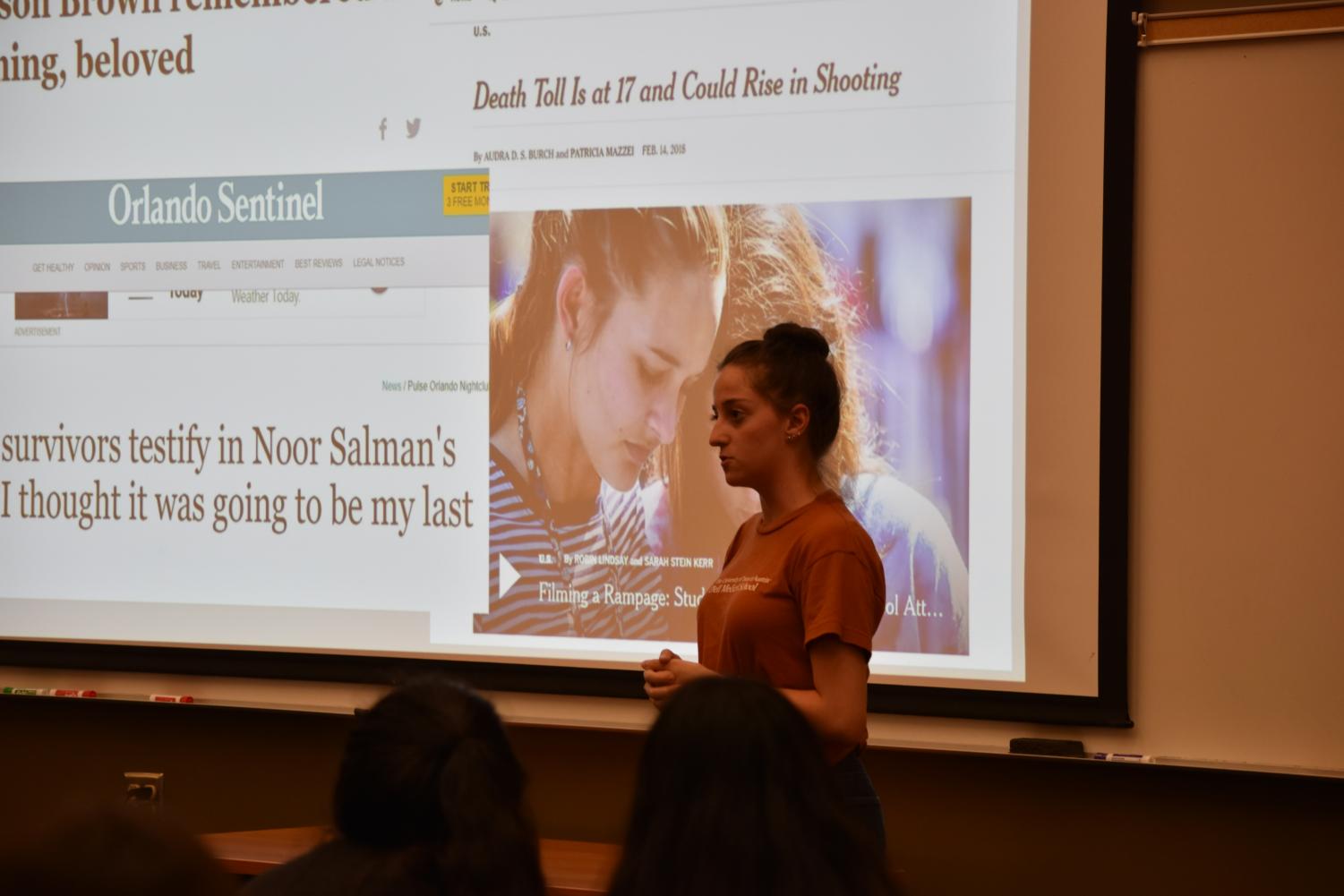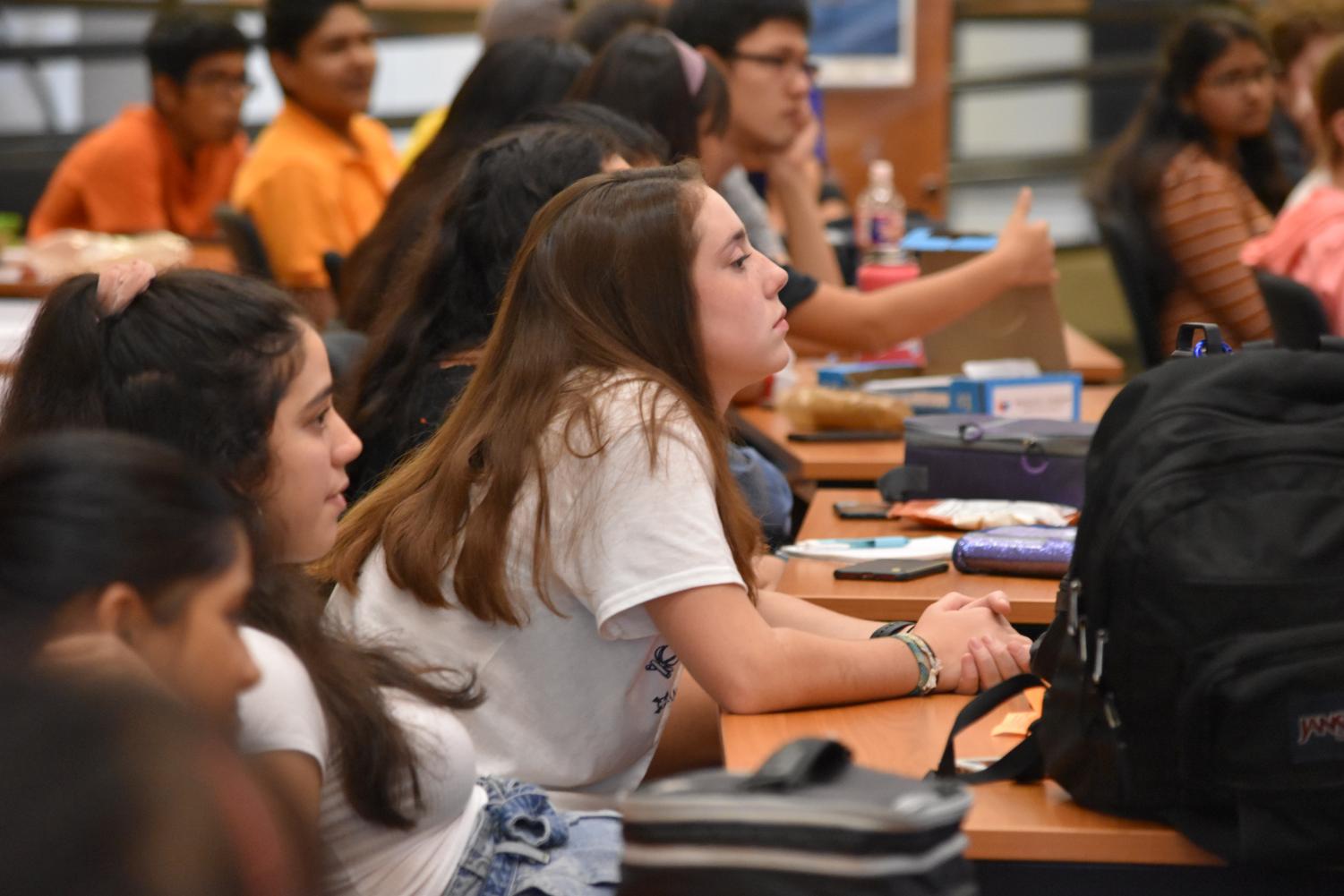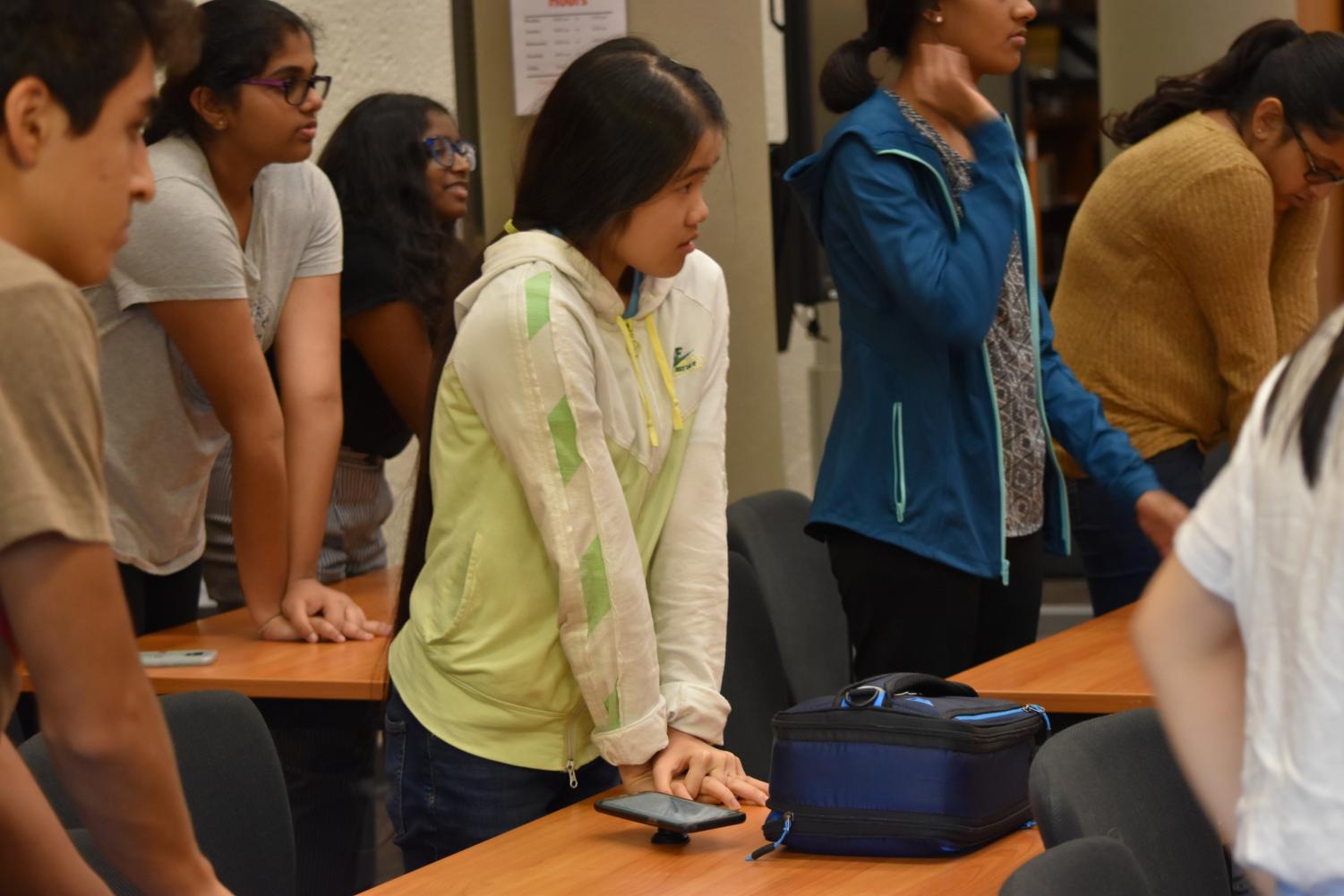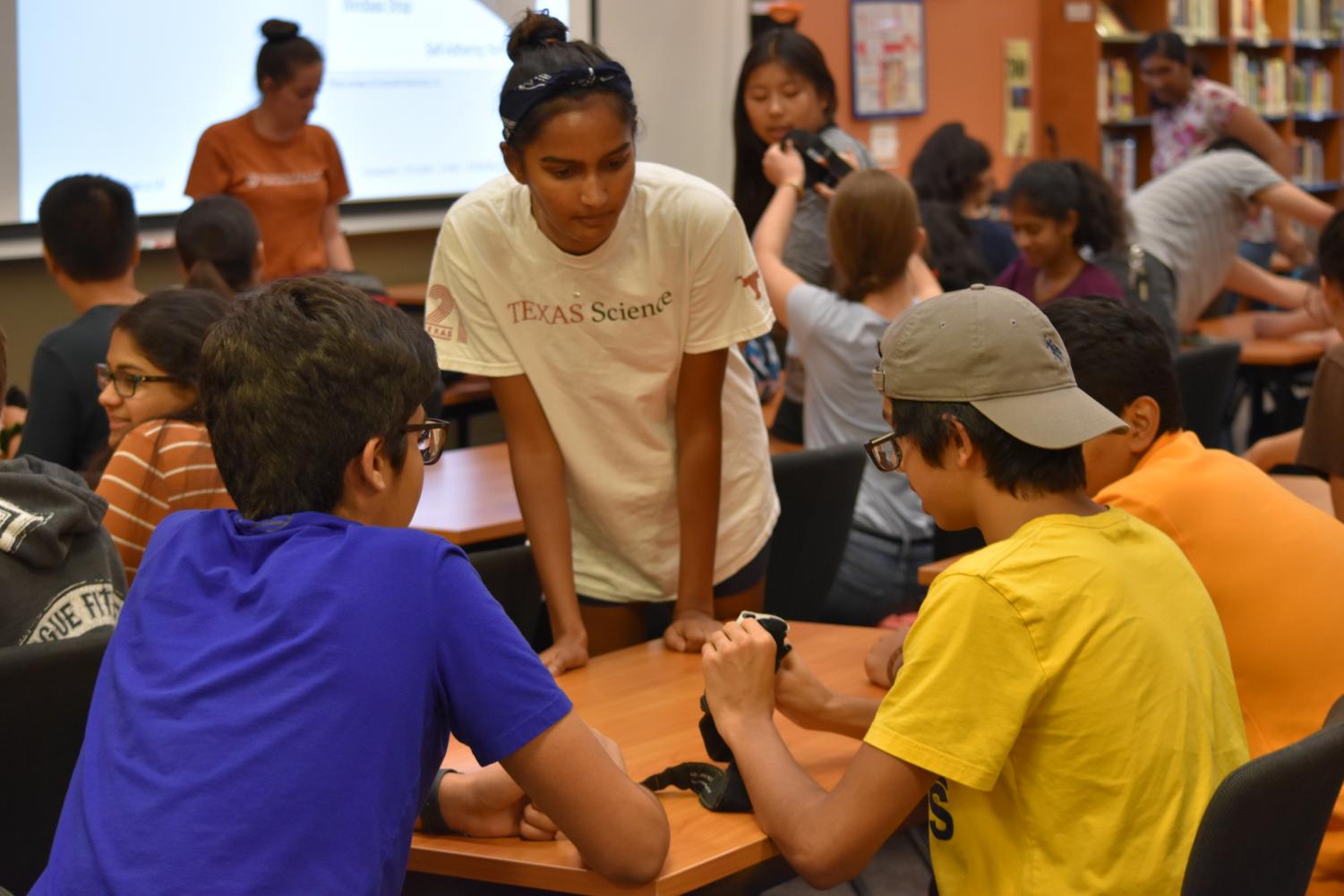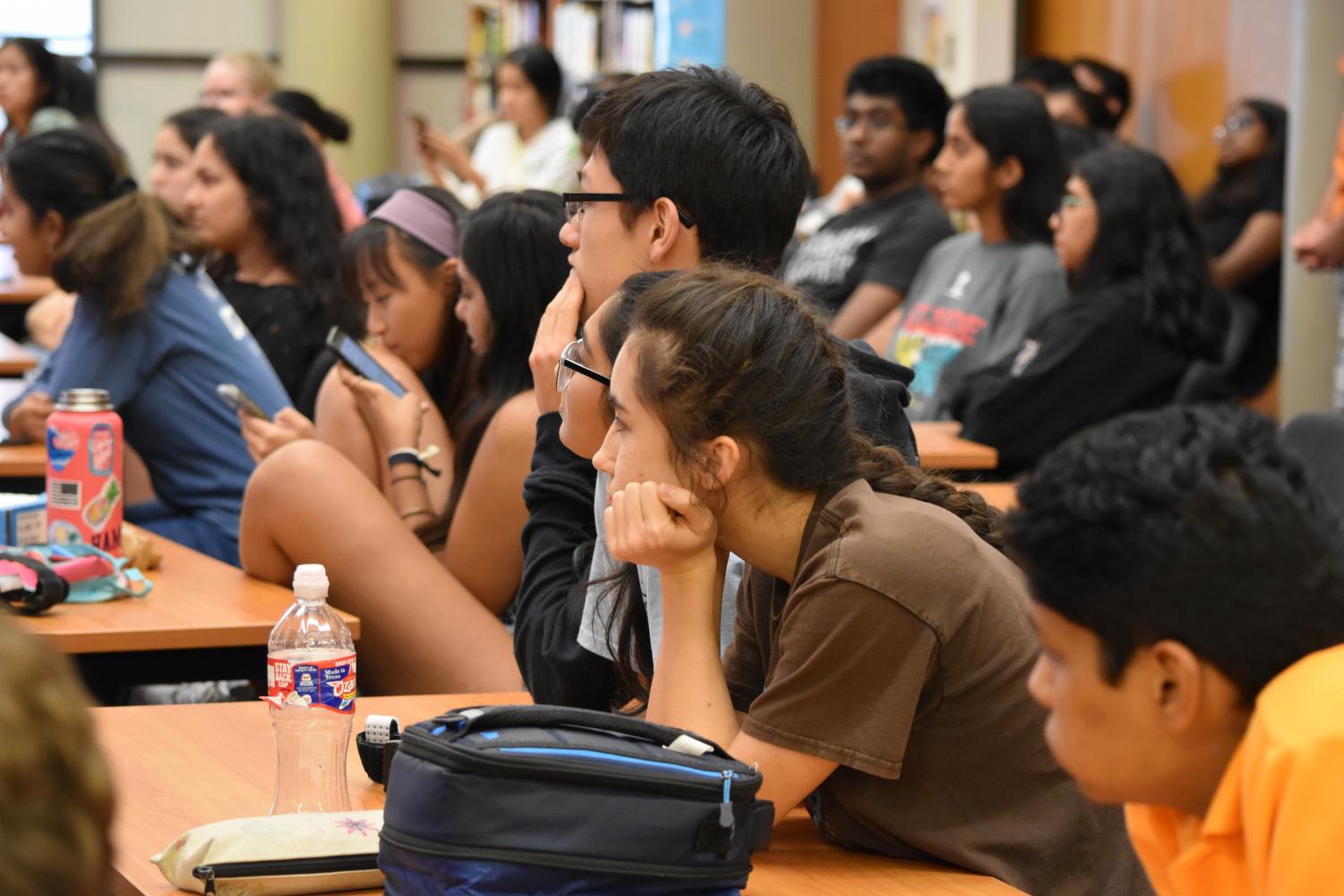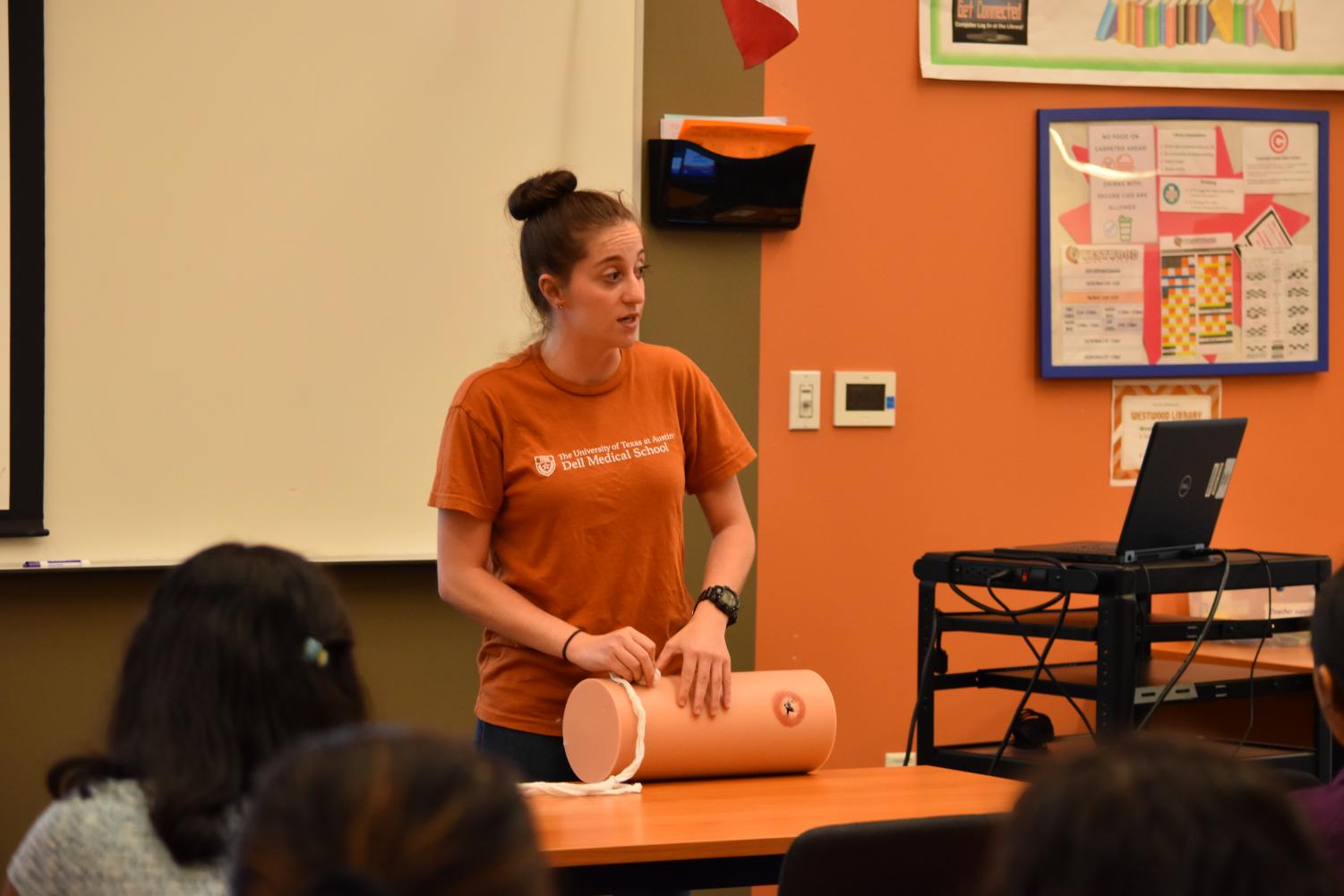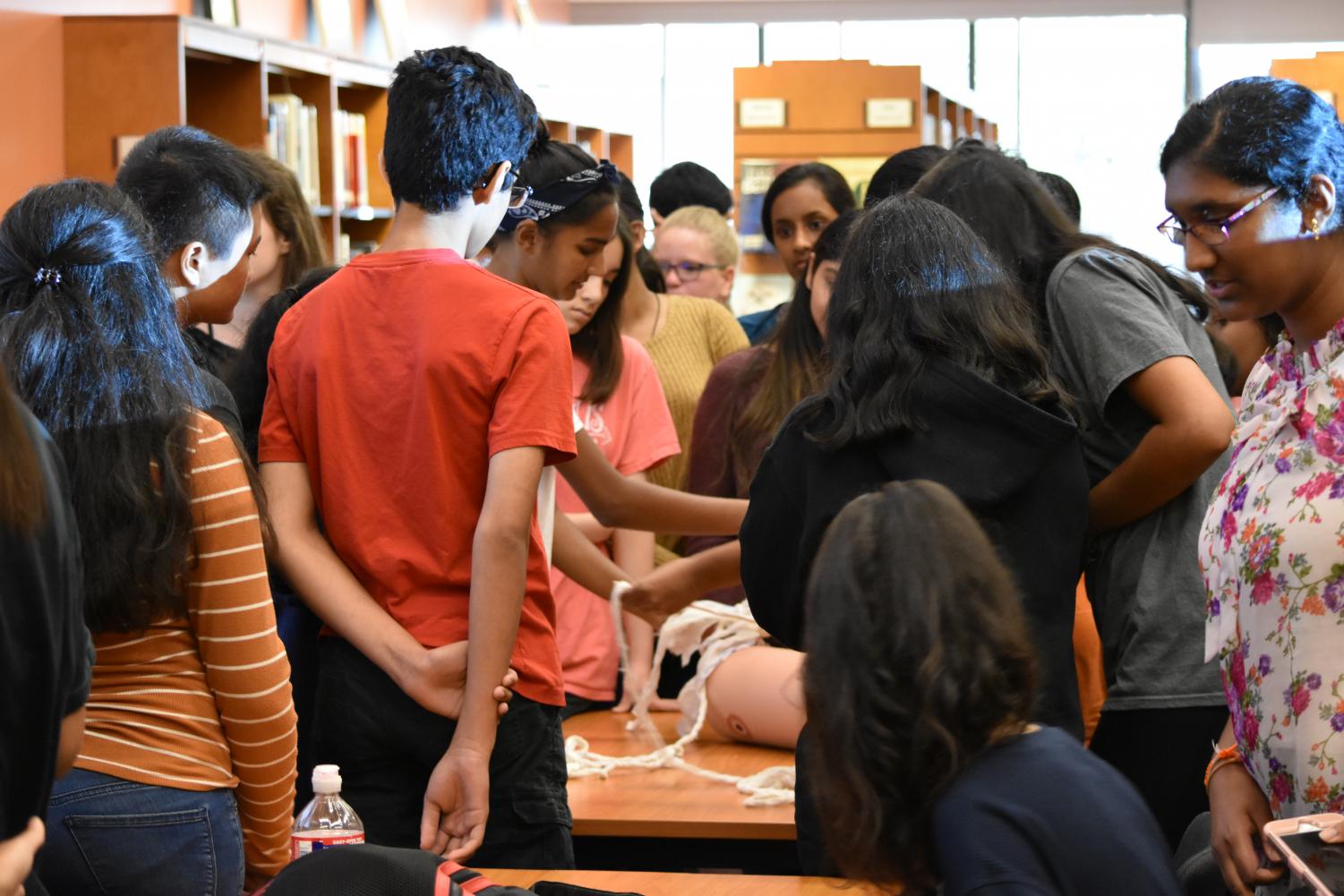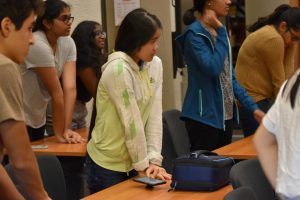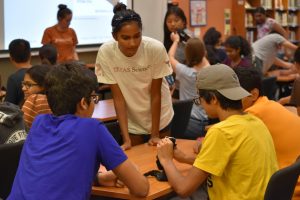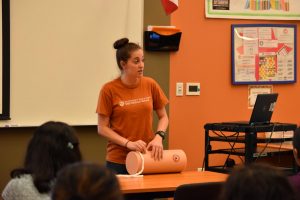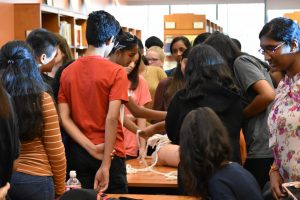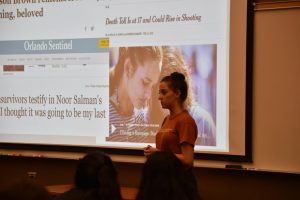Students Participate in ‘Stop the Bleed’ Event
October 8, 2019
Students gathered in the Great Room for the ‘Stop the Bleed’ event after school on Friday, Oct. 4, where they were trained by the University of Texas at Austin (UT Austin) presenters to effectively stop bleeding through the use of certain medical supplies and techniques.
The Academy Ambassadors hosted this event to give students the opportunity to learn how to help in dire, traumatic situations to potentially save lives. In the training session, students learned how to use tourniquets, gauze, and apply direct pressure to wounds to stop them from bleeding. Upon the completion of the training, students received a certificate.
“[Stop the Bleed] is an important training that not a lot of people know about because CPR and First Aid kind of come over it,” event organizer Muhammad Khan ‘21 said. “It is something that is really quick and accessible, and that’s why we brought it to Westwood — so that a lot of students could get exposed to it.”
UT Austin presenters first taught the attendees the alert, bleeding, and compression (ABC) method, which is the proper protocol to use when someone has a severe emergency. Many students felt like this training would benefit them in their health science pathways.
“I think [Stop the Bleed] itself is important because the more people that learn this type of training, the more we can save [lives],” Swedha Pentam ‘20 said. “I am also in the Medical Reserve Corps, which is an organization that targets events specifically for emergency preparedness, so I think [this training] is really important for that.”
In a real-life scenario, it would be really important for a person trained in ‘Stop the Bleed’ to be familiar with how wounds look so they do not panic when they see them. To give students exposure and preparation for what they might experience, the speakers added some pictures of bleeding wounds into their presentation.
“I was nervous at first [because] some of the pictures were really discomforting, but after I looked through [them], I got used to it,” Pentam said.
After that, the speakers followed by demonstrating how to properly position, wrap and tighten a tourniquet around an injured patient. The students could get simulated hands-on practice with a plastic leg so that they could practice packing wounds and applying direct pressure.
“[This training] was very interesting and fun,” Samaira Salemohmed ‘23 said. “I have never done anything like this before and I’m really happy that I was able to do it.”
The UT Austin presenters wrapped up the session by encouraging students to ask any questions that they had. Because uncontrolled bleeding is the main cause of preventable deaths, the ‘Stop the Bleed’ coalition continues to empower and equip common people to assist in emergency situations before professionals arrive. So far they have trained 3,500 people out of their goal of 10,000 people.
“I believe it’s very important that we all know how to stop bleeding. [I learned that] it is really important to act fast along with stopping [wounds] from bleeding,” Salemohmed said. “I hope I’m never in an [emergency] situation [with someone bleeding], but if I am, I would know what to do.”

